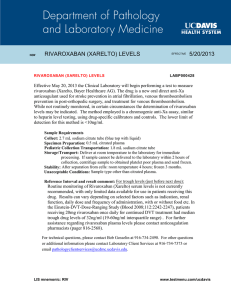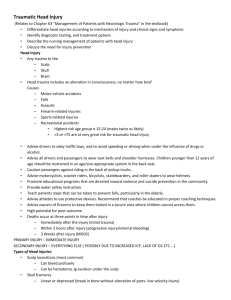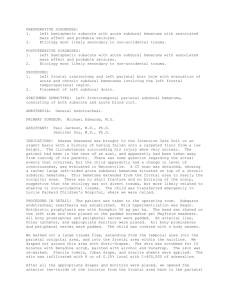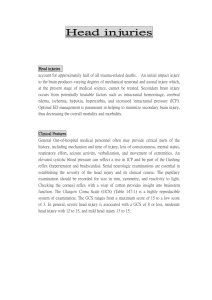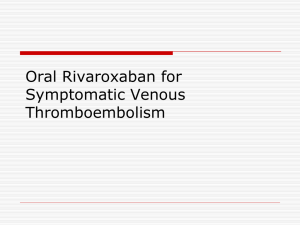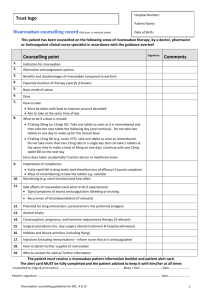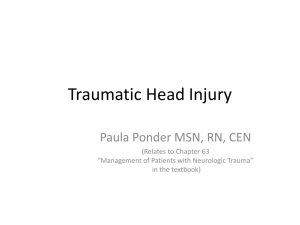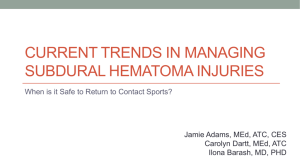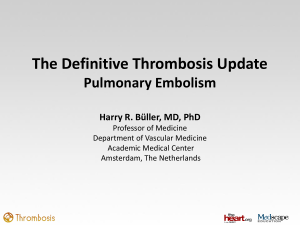spontaneous subdural hematoma while on xarelto
advertisement
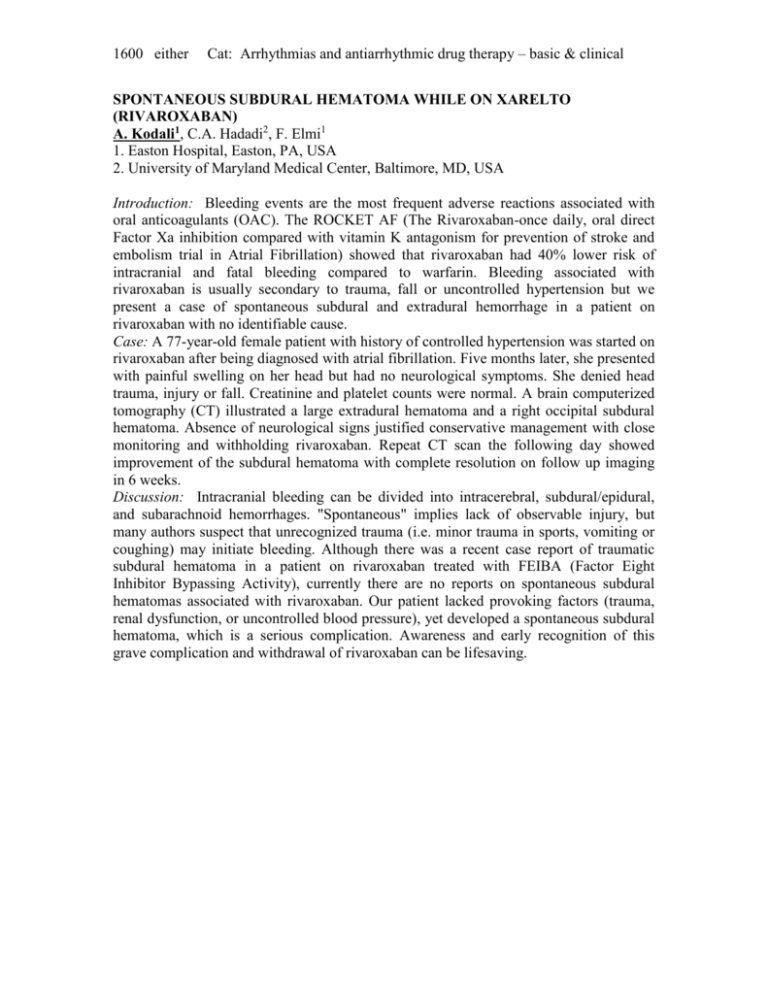
1600 either Cat: Arrhythmias and antiarrhythmic drug therapy – basic & clinical SPONTANEOUS SUBDURAL HEMATOMA WHILE ON XARELTO (RIVAROXABAN) A. Kodali1, C.A. Hadadi2, F. Elmi1 1. Easton Hospital, Easton, PA, USA 2. University of Maryland Medical Center, Baltimore, MD, USA Introduction: Bleeding events are the most frequent adverse reactions associated with oral anticoagulants (OAC). The ROCKET AF (The Rivaroxaban-once daily, oral direct Factor Xa inhibition compared with vitamin K antagonism for prevention of stroke and embolism trial in Atrial Fibrillation) showed that rivaroxaban had 40% lower risk of intracranial and fatal bleeding compared to warfarin. Bleeding associated with rivaroxaban is usually secondary to trauma, fall or uncontrolled hypertension but we present a case of spontaneous subdural and extradural hemorrhage in a patient on rivaroxaban with no identifiable cause. Case: A 77-year-old female patient with history of controlled hypertension was started on rivaroxaban after being diagnosed with atrial fibrillation. Five months later, she presented with painful swelling on her head but had no neurological symptoms. She denied head trauma, injury or fall. Creatinine and platelet counts were normal. A brain computerized tomography (CT) illustrated a large extradural hematoma and a right occipital subdural hematoma. Absence of neurological signs justified conservative management with close monitoring and withholding rivaroxaban. Repeat CT scan the following day showed improvement of the subdural hematoma with complete resolution on follow up imaging in 6 weeks. Discussion: Intracranial bleeding can be divided into intracerebral, subdural/epidural, and subarachnoid hemorrhages. "Spontaneous" implies lack of observable injury, but many authors suspect that unrecognized trauma (i.e. minor trauma in sports, vomiting or coughing) may initiate bleeding. Although there was a recent case report of traumatic subdural hematoma in a patient on rivaroxaban treated with FEIBA (Factor Eight Inhibitor Bypassing Activity), currently there are no reports on spontaneous subdural hematomas associated with rivaroxaban. Our patient lacked provoking factors (trauma, renal dysfunction, or uncontrolled blood pressure), yet developed a spontaneous subdural hematoma, which is a serious complication. Awareness and early recognition of this grave complication and withdrawal of rivaroxaban can be lifesaving.
